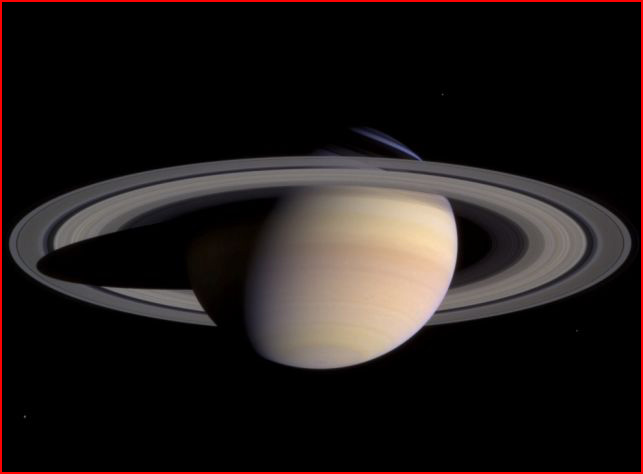|
|
||
 Credit: Cassini Imaging Team, SSI, JPL, ESA, NASA |
||
|
pic of the day Links:
Society for
|
Sep 23, 2004 The Greeks called it the god "Helios". The Romans called it "Sol". These familiar figures have a long history, and the more one learns about their links to the earlier cultures, the more a mystery of origins comes into focus. Long before Greek and Roman times, the Egyptians worshipped the luminary Atum or Ra, just as the Sumerians honored Utu and the Babylonians the god Shamash. Astronomers and priests celebrated this light of heaven as the "Universal Monarch," the "father" of civilization and the celestial prototype of kings. There is no mystery as to the present astronomical associations of these figures. But more archaic traditions, coming from many and diverse cultures, identify the great "sun" gods with the motionless center of heaven, the celestial pole. They speak of a primeval sun, an exemplary or "best" sun, ruling before the present sun. The god's station was the summit of the world axis, from which he ultimately fell in a heaven-altering catastrophe. Perhaps the best known story is the Greek account of Kronos, founder of the Golden Age, eventually driven from his seat at the top of the world by his son Zeus. To what body did these strange traditions refer? Today we take for granted that the ancient words we translate as "helios" and "sol" originated as references to the Sun that illuminates our every day. In many languages the words for this axial figure did indeed become the words for the Sun. But the later identity could not obscure the more archaic idea--of a former, stationary light at the pole, whose every feature defies any identification with the Sun in our sky today. As strange as it may seem, early astronomical traditions identify the "primeval sun" as the planet Saturn, the distant planet which the alchemists called the "best sun" and which the Babylonians, the founders of astronomy, identified as the exemplary light of heaven, the "sun"-god Shamash. ("Shamash is the planet Saturn", the astronomical texts say.) In archaic copies of Plato's Timaeus, the word for the planet Saturn is Helios, the "sun" god. Popular Greek traditions identified Saturn as Kronos, alter ego of Helios, and Kronos is said to have ruled "over the pole". But only a handful of scholars have bothered to trace the parallel referents in other cultures, or to address the unanswered questions. Worldwide drawings and symbols of the once-dominant luminary show a disc with rays, a disc with spokes, a disc with a central orb or eye, a disc with a crescent upon it. Today we require a powerful telescope to see Saturn as a disc. We must fly a space probe close to the planet to see rays and spokes. Even then the spokes are intermittent and dark. The ancient astronomers, however, described the spokes as those of a cosmic wheel. They were "streams of fire", the "glory" of heaven. Our telescopes and probes can see things the ancients couldn't: Saturn's unexpected excess of heat, its radio emissions, its x-rays, its swirling bands of storm-clouds. These things are unexpected to modern astronomers. To the ancient astronomers (had they possessed the technologically enhanced senses of probes), the things our instruments now witness would likely be understandable. For they remembered their gods as energetic and active, wielders of the thunderbolt. And they also remembered the fates of the gods, recounting how the once palpable ruler of the sky went so untouchably far away. |
|
|
Copyright 2004: thunderbolts.info |
||
